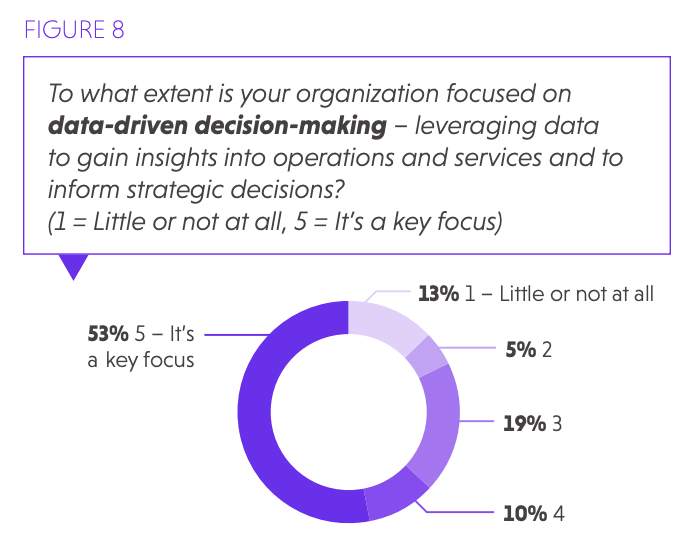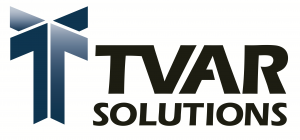The rise of data has opened new doors for government agencies. Increasingly, they are collecting, analyzing and using historical facts and trends to improve policies, citizen services and respond to pressing social challenges.
This data-driven method of decision-making offers serious benefits to agencies, which explains why more than half of respondents (53%) said it is a key focus for their agency (See Figure 8).
But what about the other 37% that seems to be either middle-of-the-road or uninterested in making data-driven decisions? For some agencies, it isn’t so much that the desire to make data-driven decisions is lacking, the issue is they don’t have the necessary capabilities to fully support those efforts.

The other major challenge is that government organizations are not taking full advantage of data that is available to them. In some cases, they aren’t quite sure what data they have, which makes prioritizing data-driven decision-making a challenge.
We pulled some helpful best practices from a Health and Human Services Department resource that outlines practical steps for data-driven decision-making. Regardless of what your mission focus is, these four iterative stages outlined below can help you use data more strategically.
1. Formulate key questions.
The process begins with identifying and clarifying the key questions to be answered for your organization. These questions may address the need to solve a specific problem, learn more about a target population or improve a program or organizational process.
2. Collect and analyze data.
Guided by the key questions, identify available data and collect new data as needed. Access to high-quality data is critical.
3. Communicate results to decision-makers.
Share results with key decision-makers within and between levels of the organization or broader service system. Dissemination may take place through various communication channels and formats, depending on the information needs of stakeholders.
4. Refine processes, organizations or systems.
Decision-makers use information gathered during the previous stages to assess gaps in services; strengthen the performance of programs, organizations or systems; and assess the impact of services on outcomes of interest. As more information is collected, the process remains ongoing with additional evidence producing new insights and subsequent questions for further data collection and analysis.
This article is an excerpt from GovLoop’s recent report, “A New Approach to Managing Data Complexity.” Download the full report here.






Leave a Reply
You must be logged in to post a comment.